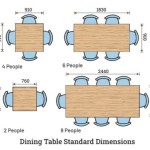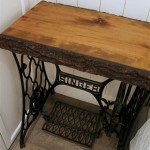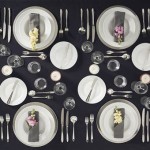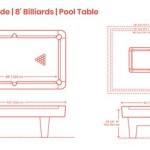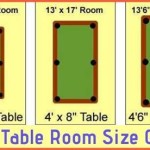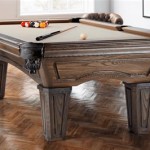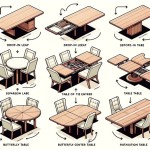Height of End Table: A Comprehensive Guide
End tables, ubiquitous fixtures in living rooms, bedrooms, and other spaces, serve a variety of practical and aesthetic purposes. They provide a surface for lamps, books, beverages, and various decorative items. However, the effectiveness of an end table is intrinsically linked to its height. Selecting the appropriate height for an end table is crucial for both functionality and visual harmony within a room. Understanding the factors influencing this decision can significantly enhance the overall usability and design of a space.
The perceived appropriateness of an end table's height is not simply a matter of personal preference. It is a function of the surrounding furniture, the intended use of the table, and the overall design aesthetic of the room. A poorly chosen height can render the table unusable or create a visually jarring effect. Conversely, a well-chosen height can enhance both the functionality and the visual appeal of the surrounding furniture.
This article will delve into the various aspects of end table height, providing a comprehensive guide to selecting the optimal height for different scenarios. It will explore the relationship between end table height and sofa height, bed height, and chair height, as well as consider specific uses and design considerations.
Relationship to Sofa Height
The most common placement for end tables is alongside sofas. Therefore, the height of the sofa is a primary determinant of the appropriate end table height. As a general rule, the end table should be at the same height as the sofa arm or slightly lower, ideally within a range of two inches. This allows for easy access to items placed on the table without requiring awkward reaching or straining. For example, if a sofa has an arm height of 24 inches, the ideal end table height would be between 22 and 24 inches.
This proximity in height ensures that the table surface is easily accessible from a seated position. It allows a person to comfortably place a drink, book, or remote control on the table without having to lean too far forward or reach upwards. This promotes both comfort and convenience, enhancing the functionality of the living space.
Variations in sofa design, particularly arm style, can influence the ideal end table height. Sofas with higher, more substantial arms may necessitate a slightly taller end table to maintain proportional balance. Conversely, sofas with low, sleek arms may benefit from a lower end table. In situations where the arm height is difficult to discern, measuring the distance from the floor to the top of the sofa cushion can provide a helpful guideline for determining the ideal end table height.
When selecting end tables for a sectional sofa, it's often beneficial to choose tables of varying heights. This allows for greater flexibility in accommodating different seating positions and provides visual interest within the room. For example, a taller end table could be placed at the end of a chaise lounge section, while a lower table could be placed between two adjacent seating sections.
Relationship to Bed Height
End tables, often referred to as nightstands when placed beside a bed, function as crucial bedside companions. Similar to the relationship with sofas, the height of the bed plays a crucial role in determining the appropriate height for the nightstand. The general guideline is for the nightstand surface to be at the same height as, or a few inches higher than, the top of the mattress. This allows for easy access to items such as lamps, books, or alarm clocks without requiring the user to reach downwards awkwardly.
The increasing popularity of platform beds and beds with thicker mattresses necessitates a careful consideration of nightstand height. A standard nightstand height of 24 inches may be too low for a bed with a 30-inch mattress height. In such cases, a taller nightstand, perhaps in the range of 28 to 32 inches, would be more appropriate. Conversely, a lower bed frame may require a nightstand that is lower than the standard height.
Beyond accessibility, the aesthetic balance between the bed and nightstand is also important. A nightstand that is significantly lower than the bed can appear dwarfed and visually unappealing. Conversely, a nightstand that is significantly taller can overwhelm the bed and disrupt the visual harmony of the bedroom. Therefore, maintaining a proportional relationship between the two is essential for creating a cohesive and aesthetically pleasing space.
Consideration should also be given to the types of items that will be placed on the nightstand. If the primary purpose of the nightstand is to hold a reading lamp, then the height should be sufficient to provide adequate illumination for reading in bed. If the nightstand is primarily used for storing books or other items, then the height should be sufficient to allow for easy access to these items without requiring the user to bend over excessively.
Relationship to Chair Height and Specific Uses
While sofas and beds are the most common companions for end tables, their placement alongside chairs is also prevalent. In this context, the same principles apply: the end table should be at the same height as the chair arm or slightly lower. This ensures that the table surface is easily accessible from a seated position, allowing for comfortable placement of drinks, books, or other items.
However, the specific use of the end table can also influence the optimal height. For example, if the end table is primarily intended to hold a lamp, then the height should be sufficient to provide adequate illumination for reading or other tasks. In this case, a slightly taller end table may be preferable, as it will position the lamp at a more optimal height for directing light.
If the end table is intended to serve as a small workspace, perhaps for using a laptop or writing, then the height should be sufficient to allow for comfortable use without requiring the user to hunch over or strain their neck. In this case, a taller end table, perhaps closer to the height of a small desk, would be more appropriate. However, it's important to consider the overall aesthetic of the room and ensure that the taller end table does not appear out of place.
The design of the chair itself can also influence the optimal end table height. Chairs with high arms may require a taller end table, while chairs with low or no arms may benefit from a lower end table. Similarly, chairs with a reclined seating position may require a slightly taller end table to allow for easy access to items placed on the table.
Furthermore, the intended aesthetic of the room should also be considered. In a more formal setting, a symmetrical arrangement of end tables, all of the same height, may be preferable. In a more casual setting, a more eclectic mix of end tables, with varying heights and styles, may be more appropriate. Ultimately, the choice of end table height is a balance between functionality, aesthetics, and personal preference.
The material of the end table can also play a role in the perceived height. A solid wood end table may appear more substantial and visually grounding than a glass or metal end table. Therefore, a slightly lower wooden end table may have the same perceived height as a slightly taller glass or metal end table. The overall color scheme of the room can also influence the perceived height of the end table. A dark-colored end table may appear shorter and more compact than a light-colored end table of the same dimensions.
Finally, it is crucial to consider the overall flow of the room when determining end table height. The end tables should not obstruct walkways or create a cluttered appearance. The height of the end tables should complement the other furniture in the room and contribute to a sense of visual balance and harmony. Taking the time to carefully consider these factors will ensure that the chosen end table height is both functional and aesthetically pleasing, enhancing the overall enjoyment and usability of the space.

End Table Heights

End Table Height How Tall Should Your Side Be Coffee

Convenience Concepts Mission 15 75 In Gray Standard Height Square Wood Top End Table With Shelves S20 250 The Home Depot

Dropship Conifferism Tall Bed Side Tables Black Large Wood Nightstand With 2 Drawers 28 Inch Height For Living Room Sofa End Table Storage Shelf Home Accent Furniture To At A

Shine Company 24 In Long Natural Rectangular Wood Outdoor Side Table 4103n The Home Depot

Standard Sofa Table Height Home Office Furniture Desk Check More At Http Www Nikkitsfun Com S Coffee Size Dimensions

Home Decorators Collection Industrial 20 In Natural Reclaimed Wood And Metal Round Adjustable Height End Table Hdc 2006 The Depot

Tribesigns C Table Height Adjustable Sofa End With Wheels

Height Of A Sofa Table Ashley Furniture Home Office Check More At Http Www Nikkitsfun C Coffee Measurements Size Dining With Bench
How Tall Should End Tables Be Next To A Sofa Quora
Related Posts


